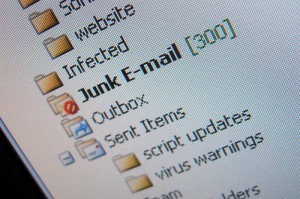If you receive an email claiming to be from ABSA regarding a payment from SARS or eBucks (see examples below), do not open it or click on any of the links. These are phishing emails attempting to acquire your passwords and other information. Immediately delete these emails and do not reply to them.
From: Absa Bank [mailto:lis@absa.co.z]
Sent: 18 September 2012 08:29 AM
To: …
Subject: SARS E-filing Payment Received
Dear Client,
A payment has been made into your account from SARS e-filing
In other to process and confirm this payment please do click here to login.
During this process, your RVN will be checked and verified.
Regards,
From: Absa Internet Banking [mailto:payment@absa.co.za]
Sent: 19 September 2012 15:01
To:
Subject: Payment Made To Your Online Banking!!
|
|
|
|
|
|
|
|
|
Copyright Absa. All rights reserved. Disclaimer and confidentiality note: Absa cannot assume that the integrity of this communication has been maintained nor that it is free of errors, virus, interception or interference. |
Absa email disclaimer and confidentiality note
Please go to http://www.absabank.co.za/ site/homepage/emaildisclaimer. html to read our email disclaimer and confidentiality note. Kindly email disclaimer@absabank.co.za (no content or subject line necessary) if you cannot view that page and we will email our email disclaimer and confidentiality note to you.
From: eBucks Credit [mailto:credit@ebucks.com]
Sent: 25 September 2012 11:56 AM
To:
Subject: eBucks Reward: You have earned a eBucks points !!!
Alert
We have detected unusual activity on this account and for your security are temporarily blocking access. To regain access to this account, please click here.
If you are unable to login, contact Member Services at 1-877-786-0722 for further assistance.




 The opposite of spam is, believe it or not, ham. In other words e-mails you WANT to receive.
The opposite of spam is, believe it or not, ham. In other words e-mails you WANT to receive. Every 90 days you receive an email from
Every 90 days you receive an email from  Every 90 days your pc prompts you to change your password. Which in turn makes you sigh with despair, conveniently ignore the message and postpone it until the absolute last day. And why? Because choosing a password you won’t forget after two days takes some effort and brain power.
Every 90 days your pc prompts you to change your password. Which in turn makes you sigh with despair, conveniently ignore the message and postpone it until the absolute last day. And why? Because choosing a password you won’t forget after two days takes some effort and brain power.